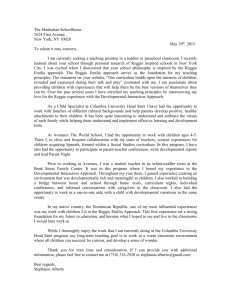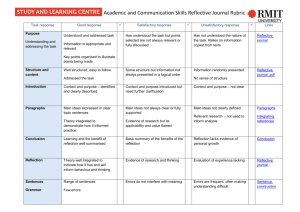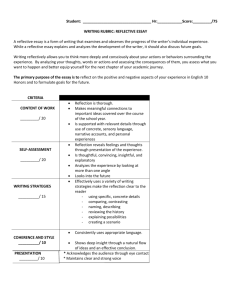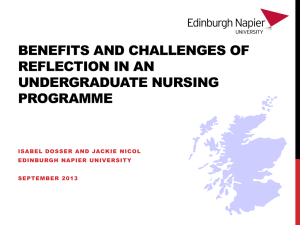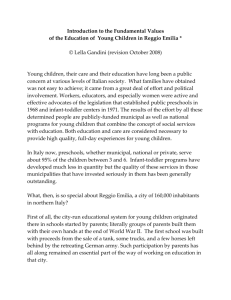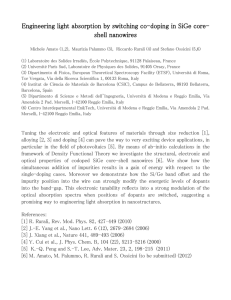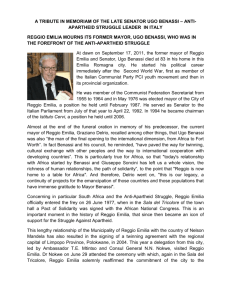Reflection - MIT Media Lab
advertisement
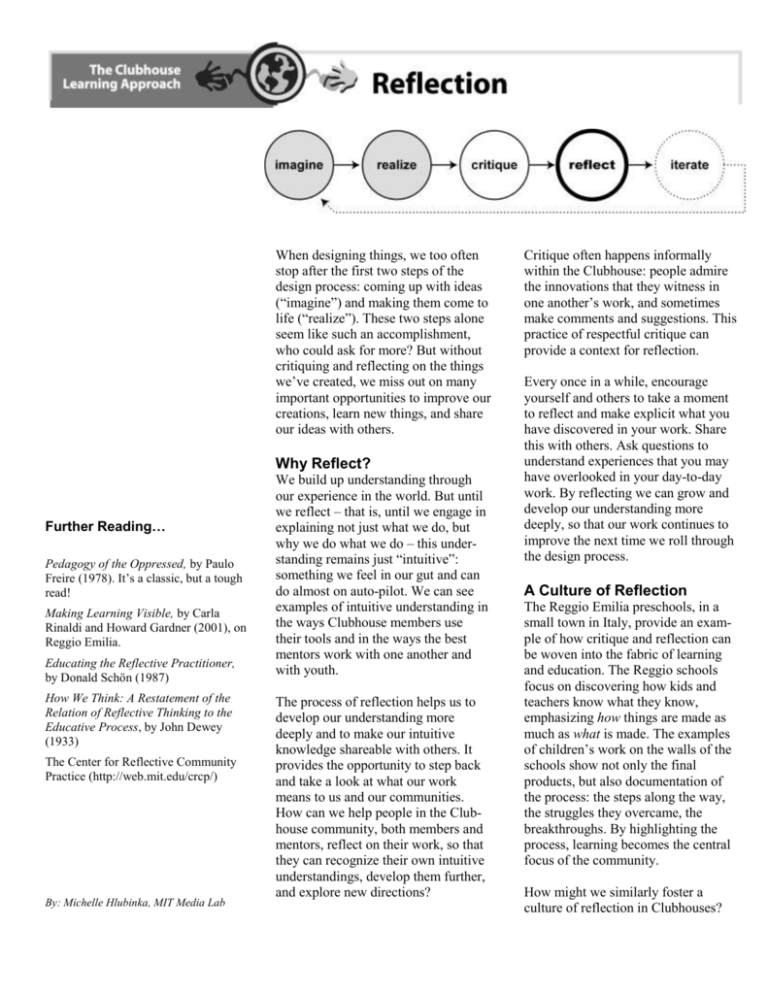
When designing things, we too often stop after the first two steps of the design process: coming up with ideas (“imagine”) and making them come to life (“realize”). These two steps alone seem like such an accomplishment, who could ask for more? But without critiquing and reflecting on the things we’ve created, we miss out on many important opportunities to improve our creations, learn new things, and share our ideas with others. Why Reflect? Further Reading… Pedagogy of the Oppressed, by Paulo Freire (1978). It’s a classic, but a tough read! Making Learning Visible, by Carla Rinaldi and Howard Gardner (2001), on Reggio Emilia. Educating the Reflective Practitioner, by Donald Schön (1987) How We Think: A Restatement of the Relation of Reflective Thinking to the Educative Process, by John Dewey (1933) The Center for Reflective Community Practice (http://web.mit.edu/crcp/) By: Michelle Hlubinka, MIT Media Lab We build up understanding through our experience in the world. But until we reflect – that is, until we engage in explaining not just what we do, but why we do what we do – this understanding remains just “intuitive”: something we feel in our gut and can do almost on auto-pilot. We can see examples of intuitive understanding in the ways Clubhouse members use their tools and in the ways the best mentors work with one another and with youth. The process of reflection helps us to develop our understanding more deeply and to make our intuitive knowledge shareable with others. It provides the opportunity to step back and take a look at what our work means to us and our communities. How can we help people in the Clubhouse community, both members and mentors, reflect on their work, so that they can recognize their own intuitive understandings, develop them further, and explore new directions? Critique often happens informally within the Clubhouse: people admire the innovations that they witness in one another’s work, and sometimes make comments and suggestions. This practice of respectful critique can provide a context for reflection. Every once in a while, encourage yourself and others to take a moment to reflect and make explicit what you have discovered in your work. Share this with others. Ask questions to understand experiences that you may have overlooked in your day-to-day work. By reflecting we can grow and develop our understanding more deeply, so that our work continues to improve the next time we roll through the design process. A Culture of Reflection The Reggio Emilia preschools, in a small town in Italy, provide an example of how critique and reflection can be woven into the fabric of learning and education. The Reggio schools focus on discovering how kids and teachers know what they know, emphasizing how things are made as much as what is made. The examples of children’s work on the walls of the schools show not only the final products, but also documentation of the process: the steps along the way, the struggles they overcame, the breakthroughs. By highlighting the process, learning becomes the central focus of the community. How might we similarly foster a culture of reflection in Clubhouses?

